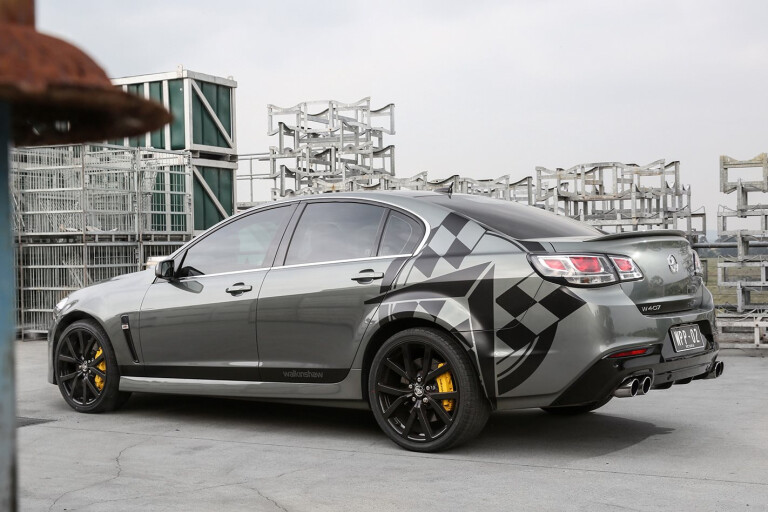
Call me weird (again) but I like offbeat things. I like asymmetry like offset racing stripes.
I like Andie MacDowell’s slightly crooked, ever-so goofy smile. I like the stray, extra drumbeat at the start of Times Like These by the Foo Fighters. And I absolutely love the ropey, lopey idle of a big-inch V8 with a lumpy great cam jammed up its valley.
Is there any better noise an idling engine can make? Don’t think so. So you’ll forgive me if I’m perhaps prematurely attracted to Walkinshaw Performance’s (WP) latest attack on sense and the senses.
 Of course, an idle that switches frenetically between a 3/4 and 4/4 time signature is one thing, but historically, best results have been gained from such engines by beating them to hell. At which point the whole, shaggy, stumbling creature morphs into a raging, screaming monster, all the way to redline. And beyond, if you let it. What’s not to like?
Of course, an idle that switches frenetically between a 3/4 and 4/4 time signature is one thing, but historically, best results have been gained from such engines by beating them to hell. At which point the whole, shaggy, stumbling creature morphs into a raging, screaming monster, all the way to redline. And beyond, if you let it. What’s not to like?
Enter WP’s 407 package which, as the name suggests, takes a normally aspirated 6.2-litre LS3 V8 and cams it to the point where it’s capable of 407kW at the flywheel at max-yowl. It’s available as an aftermarket kit and you can apply it to your new HSV or even the current 304kW VF Series II Commodore SS. Start with a second-hand car; doesn’t matter, the results will be the same – 407kW at 6250rpm.
 Now, let’s compare those numbers with the untouched version of the same Series II VF SS. Power is up a giant 103kW and torque is not only fatter – much fatter at 695Nm – but produced higher in the rev range at 4950rpm (versus 570Nm at 4400rpm for the SS).
Now, let’s compare those numbers with the untouched version of the same Series II VF SS. Power is up a giant 103kW and torque is not only fatter – much fatter at 695Nm – but produced higher in the rev range at 4950rpm (versus 570Nm at 4400rpm for the SS).
And since the supercharged LSA V8 in the HSV big-hitters only claims 400kW and 671Nm, I wanted to know how the hell a tune (rather than a pump) could create such a transformation.
So I asked Walkinshaw Performance’s Richard Jong the difficult questions. “Our W375 package was popular when we launched it a few years ago [in 2011],” he told me. “But now, some of those same people are looking for a bit more. But not all of them want to go down the supercharged path, so we developed the W407 package.”
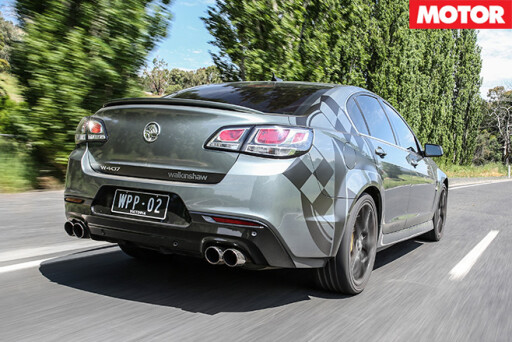 Interestingly, the only change over the W375 treatment is the 407-spec camshaft and a set of valve springs. Oh, and if the car being converted (and the package is only being sold as an aftermarket deal) has covered more than about 20,000km, WP recommends that the lifters, lifter guides, head bolts and head gaskets be renewed also.
Interestingly, the only change over the W375 treatment is the 407-spec camshaft and a set of valve springs. Oh, and if the car being converted (and the package is only being sold as an aftermarket deal) has covered more than about 20,000km, WP recommends that the lifters, lifter guides, head bolts and head gaskets be renewed also.
Of course, you’re already starting from base-camp with the 375 stuff which equals a set of ceramic-coated headers, high-flow cats and a three-inch cat-back set of pipes. There’s an over-the-radiator cold-air intake and the ECU is re-flashed to suit the 407’s temperament.
Even so, it’s a big old jump considering the lack of forced induction.
So, 103kW from a revised camshaft, intake and exhaust, then? “Yep,” said Jong. No other changes? “Nope.” What gives?
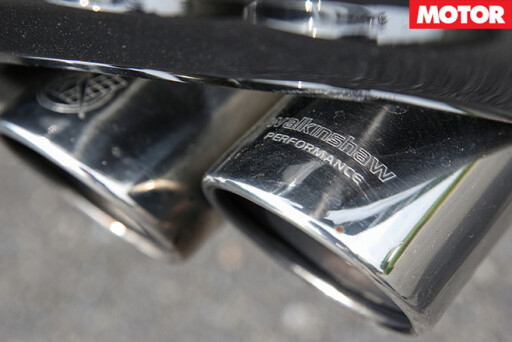 “The cam is one of about six we tested as we tried to find the right balance between performance and liveability. The cam spec is exactly the same for a manual or automatic, so it had to be compatible with the auto gearbox. Our customers expect something subtle enough to live with but they’re also looking for something with an idle that you can instantly pick as a bit special.”
“The cam is one of about six we tested as we tried to find the right balance between performance and liveability. The cam spec is exactly the same for a manual or automatic, so it had to be compatible with the auto gearbox. Our customers expect something subtle enough to live with but they’re also looking for something with an idle that you can instantly pick as a bit special.”
And boy, can you ever. Pick it, that is. Yes, I’ve heard lopier idles, but none that’s being sold as a kit through an outfit like Walkinshaw Performance. Whether you’re gazing into the engine bay, sitting inside the car or standing behind those bazooka tailpipes, there’s absolutely no mistaking the signature jig of a lumpy stick. Okay, by Summernats standards, it’s relatively tame, but still…
Traditionally, of course, the big problem with big camshafts has been a fall-off in low-end torque; a situation that doesn’t recover until you’re up into the revs and, as they say in pubs and man caves everywhere, on the cam. Except this time around, we’re starting with 6.2 litres of injected V8, so if there’s any drop-off in off-idle performance, it’s one of those dead-set first-world problems you hear about on TV.
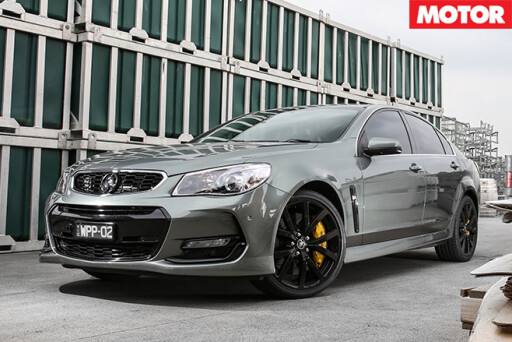 The other catch with going big in the cam department is that low-speed running can get a bit sketchy. The 407 never wants to stall on you, but in the automatic test-car we borrowed, it does make progress a bit stilted when you’re just creeping along in stop-start gridlock stuff.
The other catch with going big in the cam department is that low-speed running can get a bit sketchy. The 407 never wants to stall on you, but in the automatic test-car we borrowed, it does make progress a bit stilted when you’re just creeping along in stop-start gridlock stuff.
In a manual, you’d disguise that with a bit of clutch slip initially, but by the time the clutch was all the way home, I reckon you’d be in the same boat. Most people will deal with it. I certainly could.
Now, back to that slightly softer off-idle power-curve: I think it might actually be working in the W407’s favour. Stay with me. Traditionally, these things have been pigs to launch hard, even at a dragstrip. But the W407 just walked up to the start line, allowed me to select Sport mode in the tranny and then cannoned away from the tree like a bought one.
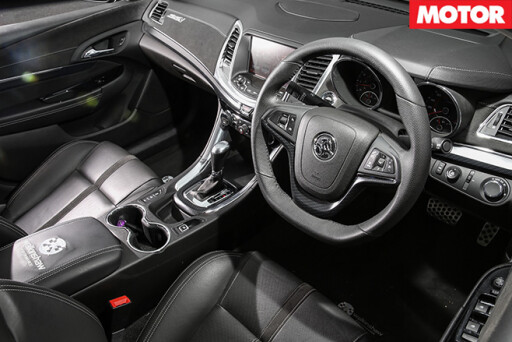 Yes, you can spool it up too far and start turning the tyres on the line and, yes, you do need to stall it up a fraction, since just jumping on the noise adds a couple of tenths to your ET. But stall it up just so and it comes out of the hole cleanly and with none of the panicked short-shifting histrionics that we’ve seen from many a Commodore and its derivatives lately.
Yes, you can spool it up too far and start turning the tyres on the line and, yes, you do need to stall it up a fraction, since just jumping on the noise adds a couple of tenths to your ET. But stall it up just so and it comes out of the hole cleanly and with none of the panicked short-shifting histrionics that we’ve seen from many a Commodore and its derivatives lately.
To the point where I reckon it records a quicker time than the on-road feel suggests. Our best was a 12.9-second run with a terminal of 181.4 and 0-100 in 4.8. Which means, of course, it can’t stay with the HSV Clubsport R8 LSA which, with its supercharged 400kW plant, gets it across the quarter in 12.5 and to 100 in 4.5.
The difference there, of course is possibly the blown R8’s lower torque and power peaks, but when you look at the terminal speeds (181.4 plays 184.8) maybe it’s closer than you think.
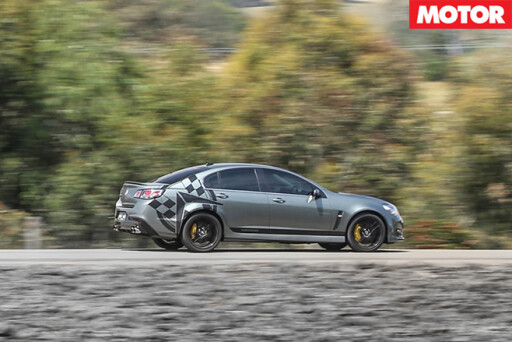 For mine, the W407 doesn’t feel like it has 407kW. Then again, when you’ve driven the 375kW, 1655kg AMG C63S, the blown 1907kg Clubbie suddenly doesn’t feel like 400kW, either. Clearly, there’s a lot of perception at work here, and I’m tipping that the less dramatic torque curve of the unblown Walky might be masking its potential a little. On the road, at least.
For mine, the W407 doesn’t feel like it has 407kW. Then again, when you’ve driven the 375kW, 1655kg AMG C63S, the blown 1907kg Clubbie suddenly doesn’t feel like 400kW, either. Clearly, there’s a lot of perception at work here, and I’m tipping that the less dramatic torque curve of the unblown Walky might be masking its potential a little. On the road, at least.
Of course, while the 407’s torque curve might lack the down-low meat-and-spuds of the LSA engine, the point of sacrificing some of that bottom-end jolt is to improve the top-end fizz. But since this is a relatively subtle camshaft, it shouldn’t be too dramatic. And that’s precisely how it feels.
There’s an appreciable increase in whup-ass as the tacho passes about 3000 and, from 3500 onwards, it’s really putting in. The engine definitely has a harder edge to it than the rather mellow 304kW tune in the VF SS. Oh, it’s still a sweet revver and never what you’d call harsh, but the rounded edges of the stocker’s power pulses have grown shoulders.
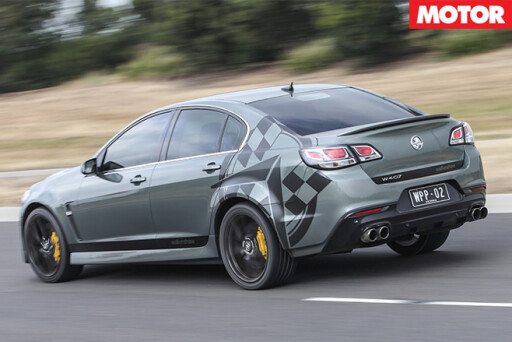 Part of that is obviously in the exhaust, of course, and while the stock SS has one of the best notes around, the Walkinshaw exhaust is altogether ballsier. That said, the delicious crackle and pop on the over-run that the SS provides seems to be missing from the Walky zorst, so it’s not as tuneful. It still features a bi-modal valve, but to turn it on and off requires going to the settings menu on the touch-screen and finding the right box to tick or untick. We just left it in ‘Angry’. Screw the neighbours.
Part of that is obviously in the exhaust, of course, and while the stock SS has one of the best notes around, the Walkinshaw exhaust is altogether ballsier. That said, the delicious crackle and pop on the over-run that the SS provides seems to be missing from the Walky zorst, so it’s not as tuneful. It still features a bi-modal valve, but to turn it on and off requires going to the settings menu on the touch-screen and finding the right box to tick or untick. We just left it in ‘Angry’. Screw the neighbours.
Next-door neighbours making scrunched-up, unhappy faces is one thing, of course, but eventually even you might tire of the racket. This won’t happen in the first few days of ownership, but eventually you might want to listen to the stereo or something. In blare-mode, the exhaust is just on the verge of droning at freeway speeds if you’re even slightly into the power, say, when going up a long hill.
The other thing you may learn to hate is the stink of unburned PULP at idle. This is all to do with the increased valve overlap on the W407 camshaft (we think) but it remains that if you’re standing down-wind of an idling W407, a sensitive nose will know all about it.
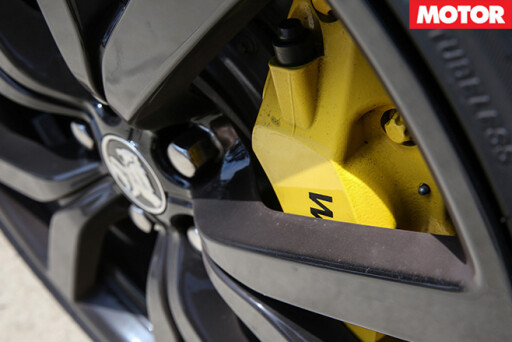 “Smells like an old muscle car,” said snapper Brunelli. And having photographed several thousand old idling muscle cars in his life, he’d know. Then again, if you’re sufficiently into cars like this to actually buy one, chances are the scent will be sweeter than frankincense. Maybe myrrh, even.
“Smells like an old muscle car,” said snapper Brunelli. And having photographed several thousand old idling muscle cars in his life, he’d know. Then again, if you’re sufficiently into cars like this to actually buy one, chances are the scent will be sweeter than frankincense. Maybe myrrh, even.
That, however, and every other so-called compromise of this package I could easily deal with on a day-to-day basis. I still have a niggling feeling that this is not 407kW-worth of shunt, but that probably says more about me and my suspicious mind than anything about the car itself. Because beyond that, I absolutely dug the thing.
I reckon the tune is absolutely spot on for the punter with an extra ten-large ($9990, to be exact) to hurl at their new SS-V and the changes turn it into a big sweetie of a thing with a bit of attitude, rather than some grumpy mongrel that wants to eat you.
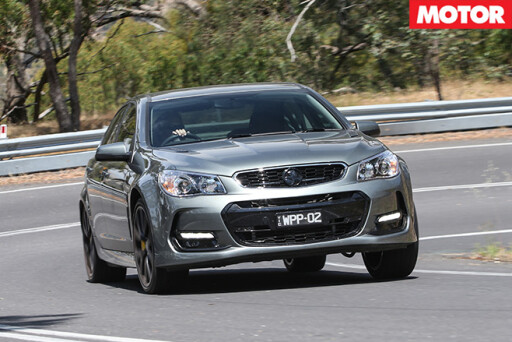 I kind of miss the over-run acoustics of the stock SS and I’d love to try the same combo with a slightly looser torque converter 'cos I reckon that would make the most of the power delivery. That said, it could completely screw the pooch, and having to change it back again is an awfully expensive way of learning your lesson.
I kind of miss the over-run acoustics of the stock SS and I’d love to try the same combo with a slightly looser torque converter 'cos I reckon that would make the most of the power delivery. That said, it could completely screw the pooch, and having to change it back again is an awfully expensive way of learning your lesson.
The other thing that occurs to me is that this engine proves that modern electronic management can make what would have been a problem child in the old days into something that is just a bit cheekier and playful, without being headed for Juvenile Hall every time you fire it up. I guess we already knew that much, but to have it confirmed in the metal is always satisfying.
And finally, it’s nice to see an old-school tuning method get results. It’s too easy in this Playstation world to forget that you can manipulate the fuel and spark tables up to a point, but for real results, you gotta go deeper in. Because if it was easy, we’d all be doing it.
SPECS
body 4-door, 5-seat sedan
drive rear-wheel drive
engine 6162cc V8, OHV, 16v
bore/stroke 103.1 x 91.9mm
compression 10.7:1
power 407kW @ 6250rpm
torque 695Nm @ 4950rpm
power/weight 227kW/tonne
transmission 6-speed automatic
weight 1793kg
suspension (f) struts, coil springs, anti-roll bar
suspension (r) multi-links, coil springs, anti-roll bar
L/W/h 4964/1898/1471mm
wheelbase 2915mm
tracks 1593/1590mm
steering electrically assisted rack-and-pinion
brakeS (F) 355mm ventilated discs, 4-piston calipers
brakes (R) 360mm ventilated discs, single-piston calipers
wheels 19.0 x 8.5-inch (f); 19 x 9.0-inch (r)
tyre SIZES 245/40 R19 (f); 275/35 R19 (r)
TYRE Bridgestone Potenza RE050A
price as tested $67,680 (based on SS-V Redline auto)
PROS Old-school charm on idle; increased performance; price of kit
CONS Lacks crackle of SS; low-speed behaviour; doesn't feel like 407kW
STAR RATING 4.5/5
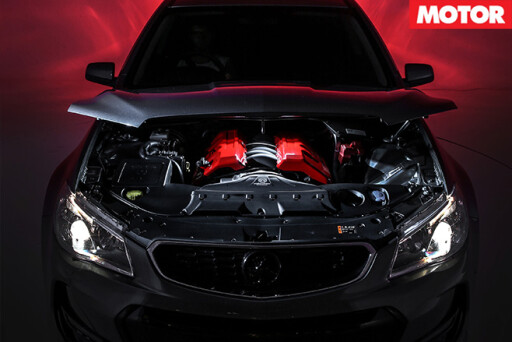 VITAL STATS
VITAL STATS
Walking away
WALKINSHAW W407
0-10km/h 0.4
0-20km/h 0.8
0-30km/h 1.2
0-40km/h 1.6
0-50km/h 2.0
0-60km/h 2.5
0-70km/h 3.0
0-80km/h 3.6
0-90km/h 4.1
0-100km/h 4.8
0-110km/h 5.6
0-120km/h 6.4
0-130km/h 7.2
0-140km/h 8.1
0-150km/h 9.0
0-160km/h 10.2
0-170km/h 11.4
0-180km/h 12.7
0-400m
12.9sec @ 181.4km/h
100-0km/h
35.9m
SPEED IN GEARS
1st 58km/h @ 6000rpm
2nd 99km/h @ 6000rpm
3rd 153km/h @ 6000rpm
4th 203km/h @ 6000rpm
5th 240km/h @ 6000rpm*
6th 240km/h @ 4100rpm*

COMMENTS